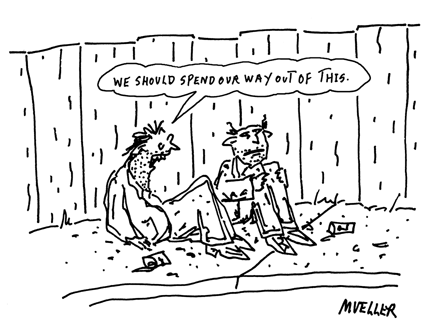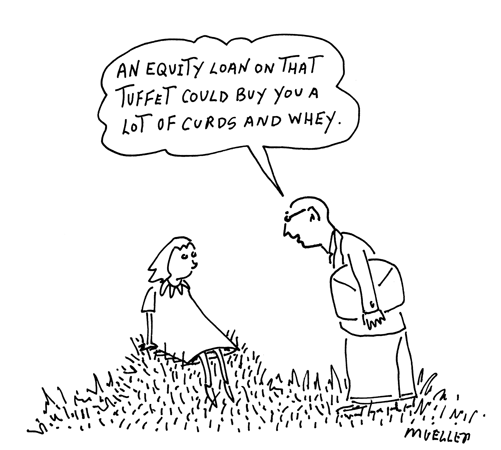
Tuesday 27 January 2009
Emerging Markets- Stumble or Fall by The Economist

NOBODY talks about “decoupling” any more. Instead, emerging economies are sinking alongside developed ones. In 2008 emerging stockmarkets fell by more than those in the rich world, and financial woes forced countries such as Hungary, Latvia and Pakistan to go cap in hand to the IMF. Taiwan’s exports have plunged by 42% over the past year, and South Korea’s by 17%; even China’s have shrunk. Singapore’s GDP fell by an annualised 12.5% in the fourth quarter of 2008, its biggest drop on record. Is this the end of the emerging-market boom?
Over the five years to 2007, emerging economies grew by an annual average of more than 7%. But in the past three months their total output may have fallen slightly, according to JPMorgan, as the fall in exports was exacerbated by a sudden drying up in trade finance. For 2008 as a whole, average growth in emerging economies was still above 6%, but recent private-sector forecasts suggest that this could slip to less than 4% this year. That is grim compared with the recent past, though still robust set against an expected 2% decline in the GDP of the G7 countries.
Short-term pain is only to be expected. But some economists argue that emerging markets’ longer-term prospects have been badly hurt by the global financial crisis. From Brazil to China, they claim, the boom was driven largely by exports to American consumers, easy access to cheap capital and high commodity prices. All three props have now collapsed. In particular, as America’s housing bust causes households to save more, they will import less over the coming years. This could reduce emerging economies’ future growth rates.
Greed—and fear by The Economist
Imagine, for a second, how finance began, with small loans within families and between trusted friends. As the circle of lenders and borrowers grew, financial transactions were able to muster larger sums and to spread risk, even as promises became harder to enforce. Paul Seabright, an economist at the University of Toulouse in France, observes that trust in a modern economy has evolved to the miraculous point where people give complete strangers sums of money they would not dream of entrusting to their next-door neighbours. From that a further miracle follows, for trust is what raises the billions of dollars that fund modern industry.
Trust’s slow accumulation pushes financial markets forward; its shattering betrayal batters them back. Sometimes this is through bad faith, as when Bernie Madoff, a grand fund manager, allegedly made his investors $50 billion poorer, or mortgage-sellers tempted naive borrowers. But promises made in good faith can be broken too. Indeed, honest failure is even more corrosive of trust than outright criminality. Everyone understands that now.
Friday 28 November 2008
The great untangling: Credit Derivatives
Until last year credit-default swaps (CDSs) were hailed as a wonder of modern finance. These derivatives allow sellers to take on new credit exposure and buyers to insure against companies or governments failing to honour their debts. The notional value of outstanding CDSs exploded from almost nil a decade ago to $62 trillion at the end of 2007—though it slipped to $55 trillion in the first half of this year and has since continued to fall. Traded privately, or “over the counter”, by banks, they seemed to prove that large, newfangled markets could function perfectly well with minimal regulation.
That view now looks quaint. Since September a wave of large defaults and near-misses, involving tottering banks, brokers, insurers and America’s giant mortgage agencies, Fannie Mae and Freddie Mac, has sent the CDS market reeling. Concern that CDSs are partly to blame for wild swings in financial shares has frayed nerves further.
The failure in mid-September of Lehman Brothers showed that the main systemic risk posed by CDSs came not from widespread losses on underlying debts but from the demise of a big dealer. The aftershock spread well beyond derivatives. Almost as traumatic was the rescue of American International Group (AIG), a huge insurer that had sold credit protection on some $440 billion of elaborate structures packed with mortgages and corporate debt, known as collateralised-debt obligations (CDOs). Had AIG been allowed to go bust, the swaps market might well have unravelled. Similar fears had led to the forced sale of Bear Stearns in March.
Sunday 23 November 2008
The Crisis & What to Do About It by George Soros
Consider how the crisis has unfolded over the past eighteen months. The proximate cause is to be found in the housing bubble or more exactly in the excesses of the subprime mortgage market. The longer a double-digit rise in house prices lasted, the more lax the lending practices became. In the end, people could borrow 100 percent of inflated house prices with no money down. Insiders referred to subprime loans as ninja loans—no income, no job, no questions asked.
Tuesday 28 October 2008
The incredible shrinking funds- from The Economist
 It wasn’t supposed to be like this. After all, most hedge funds pride themselves on providing clients with positive “absolute returns”—ie, on turning a profit whatever the financial weather. Until now that promise had been largely met. In 1998, the year that Long-Term Capital Management (LTCM), a giant hedge fund, collapsed, the industry still managed a small positive return. During the previous big financial bust of 2001 and 2002, when American shares fell by over one-third, the average hedge fund was roughly flat.
It wasn’t supposed to be like this. After all, most hedge funds pride themselves on providing clients with positive “absolute returns”—ie, on turning a profit whatever the financial weather. Until now that promise had been largely met. In 1998, the year that Long-Term Capital Management (LTCM), a giant hedge fund, collapsed, the industry still managed a small positive return. During the previous big financial bust of 2001 and 2002, when American shares fell by over one-third, the average hedge fund was roughly flat. This time, however, it really is different. Bans on short-selling have made many strategies unworkable. Poor management by hedge funds may be partly to blame: the industry has more than its fair share of illiquid assets that have been hammered during the crisis. But it also appears that forced sales of assets by hedge funds have driven prices lower, in turn hurting performance—a typical case of contagion. The 30 core American equity holdings of the biggest hedge funds, tracked by analysts at Merrill Lynch, have underperformed the stockmarket since the end of August.
What is the cause of the fire sales that seem to be at the root of the industry’s problems? The obvious answer is a withdrawal of credit, which has in turn forced hedge funds to offload assets. Sceptics have long argued that for all the skill they claim to possess, hedge funds just use cheap money to amplify mediocre returns. By this account they are simply another part of a vast, debt-dependent ecosystem that is now being starved of oxygen. Yet the role leverage has played in bringing the industry to its knees is subtler than this. And there is another prime suspect for hedge funds’ suffering: their own clients.
Wednesday 22 October 2008
Anatomy of a bottom: Psychological characteristics of capitulation are largely absent
But capitulation is something different, as I have learned in recent weeks as I have read more and more about the subject.
Capitulation has a number of distinguishing psychological characteristics, such as investor disgust and exhaustion. Having been burned by the market for so long, investors capitulate by resolving never, ever, to trust the market again.
In the wake of capitulation, therefore, interest in the market declines. Apathy rules. To be sure, this definition cannot be mechanically measured. It is hard to pinpoint when investors become maximally dejected and apathetic. But my hunch is that we have yet to experience capitulation.
Read Full Article
Tuesday 14 October 2008
The Difference is, American Banks Allowed to Fail
On the surface, the American and British programs on bank capitalization look pretty similar, but key differences are apparent.
Read Full Article


